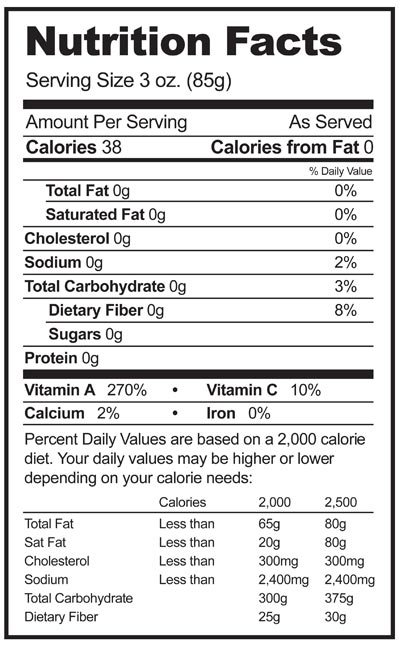
Fast food meals and other nutrient-deficient foods and beverages are making us sick and shortening our life span. The culprits: mindless snacking, gargantuan portions, and too little activity; combined with too much salt, sugar, starch, and grease.
The U.S. Dietary Guidelines address the offenders and suggest healthy food choices.
Carbohydrates: Too Much Starch Causes Weight Gain, and The Wrong Kinds of Carbs Raise the Risk for Diabetes
• Adults need about 6-8 ounces of grain per day, according to the USDA Food Pyramid. That includes cereal, bread, pasta, potatoes, and rice and other grains.
• As a rule, stay away from the color white-including potatoes, rice, and bread.
• Processed carbohydrates like white bread, bagels, and snack chips break down quickly. Like sugar, they trigger a sudden surge of insulin and rapid fluctuations in blood sugar. The cycle can lead to a condition called insulin resistance, and eventually, diabetes.
• The Harvard University School of Public Health notes that researchers suspect a link between high glycemic foods and female infertility.
• The U.S. Dietary Guidelines recommend replacing flour products and white rice and potatoes with 100% whole grain cereals and bread, and unrefined, whole grain rice.
• To avoid flour, check bread and cereal labels. Choose fiber-rich whole grains like “100% whole wheat grain,” which is not the same as “100% whole wheat flour.” Flour is not a whole grain; it has been processed.
• Simmer whole grain rice, or other grains, according to package directions; broth can be substituted for water. Try grains like barley, cracked wheat, or Wehani, a fragrant, coarsely textured, brown rice.
• Eating the right kinds of carbs, suggests the Mayo Clinic, will go a long way toward preventing high blood pressure, diabetes, and some cancers.
• To maintain a healthy weight, however, be mindful of portion control. Remember, the Dietary Guidelines say vegetables and fruit should make up half of each meal.
Sugar: Adds Unwanted Calories, and Causes Sudden Insulin and Blood Sugar Shifts, Mood Swings, and Diabetes
• Sugar can cause wild insulin spikes. Cut out sugar to stabilize blood sugar and maintain steady energy levels.
• Enjoy the natural sweetness of fruit. Choosing fresh fruit over candy and other sweets help lower your risk for cavities and weight gain.
• Combat insulin resistance with a protein snack of unsalted nuts, or unsweetened, low-fat milk or a yogurt smoothie.
• Drink water, say the U.S. Dietary Guidelines. The CDC links sugary beverages like sweetened juice drinks, sodas, and sports drinks, to fatty liver disease and gout.
Portion Control: Most Restaurant Portions Are Too Big
• Don’t pile excess protein and starch on your plate.
• The U.S. Dietary Guidelines state that fully half of your meal should consist of fruits and vegetables.
• Overeating taxes the heart and digestive system. Too much food diverts blood away from the brain and causes foggy thinking and drowsiness.
Salt: Retains Water, Aggravates PMS, and Causes High Blood Pressure
• Cut way back.
• Look on labels for 15% or less, per serving, of the daily sodium recommendation, advise the guidelines.
• Make fast food the exception, not the rule. Even if you don’t use the salt shaker, eating out usually puts you way over the entire day’s limit.
• High blood pressure damages the kidneys. The National Institutes of Health reports that almost 90,000 Americans with kidney disease are waiting for transplants.
Fat: Animal and Trans Fats Raise Cholesterol, and Contribute to Heart Disease and Stroke
• Don’t use fats that are solid at room temperature, like partially hydrogenated products.
• Avoid trans fats, which are manufactured fats used for deep-frying and added to snack foods and baked products.
• Switch to olive, peanut, or canola oil. Be careful, however. Don’t overdo it with the good fats, they are high in calories.
• Use fat-free or low-fat dairy products.
• The U.S. Dietary Guidelines recommend eating more fish. Tuna and salmon in single-serving, aluminum pouches offer convenience and portability.
. Move!
• The U.S. Dietary Guidelines stress physical activity to balance caloric intake and promote heart health.
• Activity revs up your metabolism to help you maintain a healthy weight. It also lowers your risk for heart disease and osteoporosis and helps bring unhealthy cholesterol levels down. And exercise stimulates the release of certain brain chemicals that make you feel happier.
• Another benefit of exercise: it grows your hippocampus. And that’s a good thing. The hippocampus is the part of the brain that deals with memory.
• Diet-related conditions like obesity, high blood pressure, diabetes, and sleep apnea can take a toll on the brain, according to neuroscience researcher Majid Fotuhi, MD, Ph.D. He says MRI scans show that such physiological stress shrinks the thumb-sized hippocampus.
• Exercise, on the other hand, increases the size of the hippocampus, says Dr. Fotuhi. And that improves brain function and memory.
The U.S. Dietary Guidelines are a call to action in the fight against the obesity epidemic. Healthy foods, along with portion control and physical activity, provide a strong defense against eating-related illnesses like hardening of the arteries, high blood pressure, GERD, gall bladder disease, sleep apnea, certain cancers, and the fastest growing disease in America-diabetes.
Eat healthy to feel healthy. Start by switching from sugary, or artificially sweetened, beverages to water. Or commit to brown bagging a healthy lunch to work one day per week but don’t choose Mondays or Fridays-that sets you up for destructive weekend bingeing.
Following these suggestions for good nutrition can help you stay fit and enjoy life. Your body will crave healthier food as you rely less on prepared foods that contain too much fat, sugar, salt; and starchy, refined carbs. Your wallet will benefit too, if you opt to eat more meals at home, prepared simply, from fresh, wholesome, ingredients.
Related Articles By Cathe:
New 2015 – 2020 Dietary Guidelines Are Out – What’s Changed?
Nutrition Guidelines: Why is There So Much Conflicting Information?

